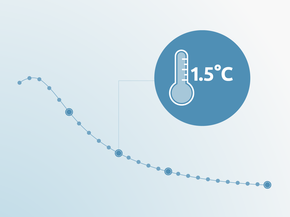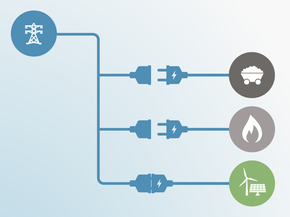Current Policy Projections
Current policies overview
According to our current policy emissions pathway, Singapore’s GHG emissions will continue rising steadily in the coming decades, reaching 60 MtCO2e in 2030, mainly due to expected stable economic growth and a total primary energy supply strongly influenced by the chemical, petrochemical and oil refining industries. Despite the continued emissions growth projected under current policies, Singapore’s emissions will be lower than its 2020 and 2030 emissions targets, demonstrating the inadequacy of those targets. Essentially, Singapore can achieve its emissions mitigation goals with no additional efforts beyond currently implemented policies.
The most recent development in Singapore´s mitigation strategy is that the government aims to implement a carbon tax from 2019, following wide consultation with stakeholders. It is proposing to tax upstream users (such as power stations and other large direct emitters, rather than electricity users) at a tax rate of between S$10 to S$20 (USD$7.33 to $14.65). The revenue collected will fund measures to reduce emissions (Singapore’s Government., 2017). A carbon tax should encourage more renewable energy in place of fossil fuel energy through changes in relative prices. The CAT has not quantified the potential mitigation impact of this carbon tax due to insufficient details on this policy.
Singapore´s mitigation strategy is based on three areas: increasing energy and carbon efficiency, reducing carbon emissions in power generation, and developing low-carbon technology (Ministry of the Environment and Water Resources, 2016).
Improving energy efficiency across the economy is the backbone of Singapore’s mitigation strategy. In its latest National Climate Action Plan (Ministry of the Environment and Water Resources, 2016), the government listed a number of policies to improve energy efficiency across all sectors, including an Energy Conservation Act, Green Mark Certification and Energy Labelling schemes, and home appliances Energy Performance Standards, among others. The Government has also implemented a target of 80% of buildings to be certified green buildings by 2030 (Singapore’s Government., n.d.).
The multiple energy efficiency measures are expected to improve energy and emissions intensity, but will not compensate for the increasing energy demand from the industry and buildings sectors, which will result in rising emissions (APERC, 2015). By contrast, the transport sector energy demand and associated emissions are expected to stagnate as a result of multiple measures to promote public transport and improve the emissions intensity of road transport. The Carbon-Emissions based Vehicle Scheme will be replaced with the Vehicle Emissions Scheme in 2018, which will expand the range of pollutants covered (Singapore’s Government., 2017).
Energy supply
For the power generation sector, the major trend in recent decades has been to replace oil with natural gas. As a result, the consumption of gas has increased six-fold since the early 2000’s (Ministry of the Environment and Water Resources, 2016). In 2016, more than 96% of Singapore’s electricity was provided by gas-fired power plants, an increase from below 70% a decade earlier (Energy Market Authority, 2017). However, even if the emissions from natural gas are lower than those from other fossil fuels, they are nevertheless still C02 emissions. Also, processes like gas liquefaction, transportation and regasification significantly increase Singapore’s carbon footprint and reduce its emissions reduction potential.
Renewables also play a role in the mitigation strategy for the power sector: in order to diversify its energy mix Singapore has significantly expanded its solar energy capacity in recent years, going from 3 MW of installed Solar-PV capacity in 2014 to over 46 MW in 2015 (Energy Market Authority, 2017). The national target for renewables is to increase installed solar capacity from to 350MW in 2020 and to increase the renewable electricity share to 8% of peak power in 2030 (Singapore’s Government, 2015).
Additional policies in the power sector include multiple incentives to increase the share of renewable generation, including the “SolarNova” programme and the expansion of Waste-to-Energy (WTE) capacity. However, this increased contribution of renewables is not sufficient to stop electricity emissions rising, given the projected stable increase in power demand and generation (APERC, 2015). IRENA’s roadmap for the ASEAN region suggests renewables could account for 10% of Singapore’s electricity generation by 2025 (International Renewable Energy Agency., 2016).
Even assuming Singapore cannot substantially strengthen its mitigation policies due to domestic factors like the limits to renewables, a more ambitious mitigation target – that could be reached by shifting to a cleaner energy supply through selective energy imports - would demonstrate the government’s commitment to contributing its fair share to global climate change mitigation.
Further analysis
Latest publications
Stay informed
Subscribe to our newsletter






